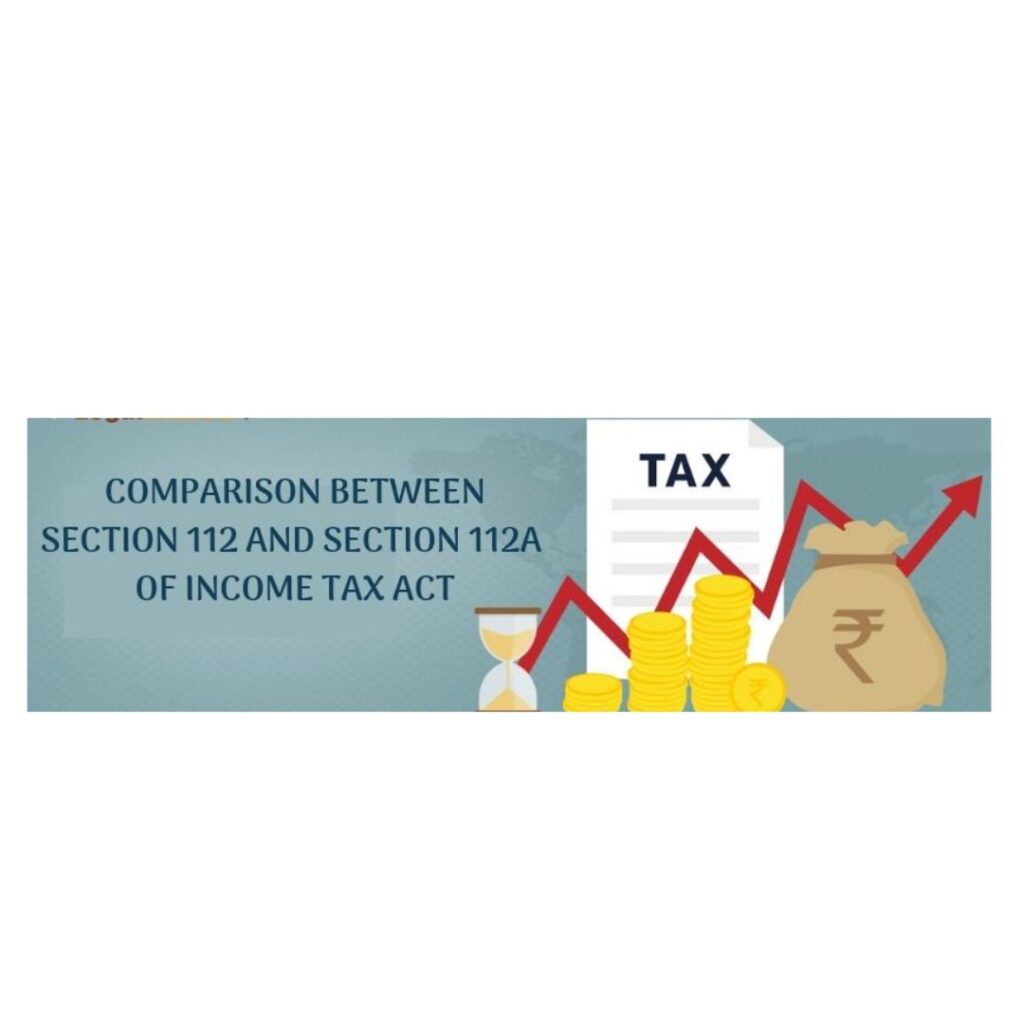Introduction
The Income Tax Act, 1961, governs taxation laws in India and includes various provisions for computing capital gains tax. Two crucial sections related to long-term capital gains (LTCG) are Section 112 and Section 112A. While both sections pertain to taxation on LTCG, they have different applicability, benefits, and limitations. Understanding their distinctions helps taxpayers plan their investments efficiently.
User Intent
Taxpayers, especially investors in stocks, mutual funds, and other capital assets, need to know the tax implications under Sections 112 and 112A. By understanding these provisions, they can optimize their tax liability while ensuring compliance with tax laws.
Benefits of Understanding Section 112 and Section 112A
- Helps in effective tax planning.
- Reduces tax liability by leveraging exemptions.
- Aids in better investment decisions.
- Ensures compliance with Indian tax laws.
Definition
- Section 112: Deals with the taxation of LTCG on assets other than equity shares and equity-oriented mutual funds.
- Section 112A: Specifically deals with the taxation of LTCG arising from the sale of equity shares, equity-oriented mutual funds, and units of business trusts, introduced in the Finance Act, 2018.
Application of Section 112 and Section 112A
- Section 112 Applies To:
- Capital gains from assets such as land, buildings, gold, debt mutual funds, and bonds.
- LTCG is subject to a 20% tax with indexation or a 10% tax without indexation (for certain assets like listed securities and zero-coupon bonds).
- Section 112A Applies To:
- Capital gains arise from transferring equity shares, equity-oriented mutual funds, and units of business trusts listed on a recognized stock exchange.
- The government taxes LTCG exceeding ₹1 lakh at 10% without indexation benefits.
Usage of Section 112 and Section 112A
- Section 112: Used for assets that do not qualify for concessional tax treatment under Section 112A.
- Section 112A: Specifically designed for equity-based investments to promote long-term investments in the stock market.
Limitations
- Section 112 Limitations:
- Higher tax rates for non-equity investments.
- No exemption for small capital gains (like the ₹1 lakh exemption in Section 112A).
- Indexation benefit is available only for certain assets.
- Section 112A Limitations:
- Only applies to listed equity shares and mutual funds.
- Gains exceeding ₹1 lakh are taxable; small investors still face some tax burden.
- No benefit of indexation is available.
Cooperative Table: Section 112 vs Section 112A
| Feature | Section 112 | Section 112A |
|---|---|---|
| Applicability | All assets except listed equity shares and equity-oriented mutual funds | Listed equity shares, equity-oriented mutual funds, and business trust units |
| Tax Rate | 20% with indexation or 10% without indexation | 10% without indexation |
| Exemption Limit | No exemption limit | ₹1 lakh exemption on LTCG |
| Indexation Benefit | Available for certain assets | Not available |
| Type of Investment | Real estate, debt funds, bonds, etc. | Equity investments |
Conclusion
Section 112 and Section 112A serve different purposes in the taxation of LTCG. Section 112 covers a broader range of assets with the option of indexation, while Section 112A provides a concessional rate specifically for equity investments. Investors should evaluate their portfolios and consider tax implications under these sections for better financial planning.
FAQs
- What is the main difference between Section 112 and Section 112A?
- Section 112 applies to all capital assets except listed equity shares, whereas Section 112A applies to equity shares and related instruments.
- What is the tax rate under Section 112?
- LTCG is taxed at 20% with indexation or 10% without indexation for certain assets.
- What is the tax rate under Section 112A?
- LTCG exceeding ₹1 lakh is taxed at 10% without indexation.
- Is indexation benefit available under Section 112A?
- No, indexation benefit is not available under Section 112A.
- Who benefits more from Section 112A?
- Investors in equity shares and mutual funds benefit from the concessional 10% tax rate and the ₹1 lakh exemption.
- Are debt mutual funds covered under Section 112A?
- No, debt mutual funds fall under Section 112 and are taxed accordingly.
- Can I claim deductions under Section 80C for gains under Section 112 or 112A?
- No, LTCG under Sections 112 and 112A does not qualify for deductions under Section 80C.
- How is the ₹1 lakh exemption under Section 112A calculated?
- LTCG up to ₹1 lakh in a financial year is tax-free, but any amount exceeding ₹1 lakh is taxed at 10%.
- What happens if I sell my stocks after one year?
- If the stocks qualify as listed equity shares, LTCG will be taxed under Section 112A.
- Can NRIs benefit from Section 112A?
- Yes, NRIs can also avail of Section 112A benefits, provided they meet the investment conditions.
By understanding these provisions, taxpayers can comply with Indian tax laws while making informed decisions and minimizing their tax liability.
For further details access our website https://vibrantfinserv.com
To visit: https://www.mca.gov.in/
Contact: 8130555124, 8130045124
Whatsapp: https://wa.me/918130555124
Mail ID: operations@vibrantfinserv.com
Web Link: https://vibrantfinserv.com
FB Link: https://fb.me/vibrantfinserv
Insta Link: https://www.instagram.com/vibrantfinserv2/

